
Early deepsea underwater exploration of the 60’s
SEALAB I-II and III were experimental underwater habitats developed by the United States Navy in the 1960’s to prove the viability of saturation diving and humans living in isolation for extended periods of time. The knowledge gained from the SEALAB expeditions helped advance the science of deep sea diving and rescue, and contributed to the understanding of the psychological and physiological strains humans can endure.
SEALAB 1
- july 1964
- 193 ft – 58 meters
- 11 days submerged
- 4 divers
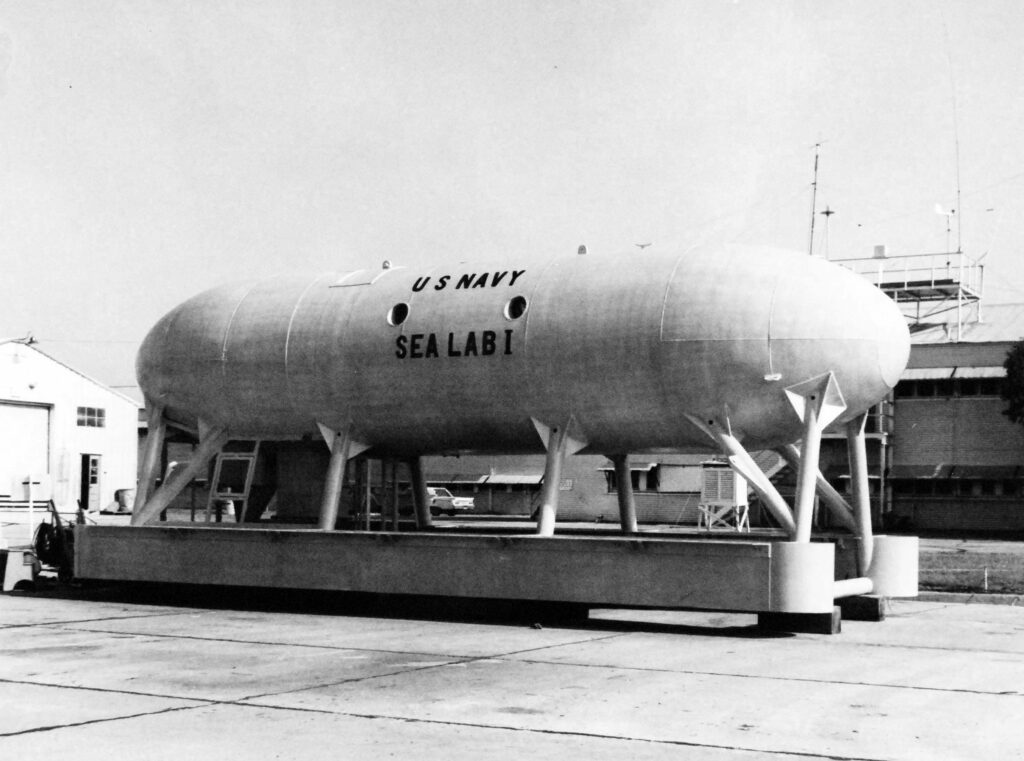
SEALAB I was lowered off the coast of Bermuda in 1964 to a depth of 58 m (192 feet of sea water (fsw)) below the sea surface. The Sealab I experiment was to test the theories of saturated diving and the ability of humans to live and operate at extreme pressures. It was made up of two converted floats and held in place with axles from railway cars. The experiment involved four divers (LCDR Robert Thompson, MC; Gunners Mate First Class Lester Anderson, Chief Quartermaster Robert A. Barth, and Chief Hospital Corpsman Sanders Manning), who were to remain underwater for three weeks. The experiment was halted after 11 days due to an approaching tropical storm.

Before the SEALAB habitat could be placed, a number of rifle grenades had to be found and removed from the seabed around Argus Island, the working platform next to Sealab 1’s position. A platform built to lower the Remote Underwater Manipulator (RUM) from a garage on Argus Island to the seabed was also removed. SEALAB I was then placed on the almost flat bottom on a layer of algae balls and some corals.
SEALAB I was commanded by captain George F. Bond, also known as “Poppa Topside”, who played a key role in developing theories on saturation diving. SEALAB I proved that saturation diving in the open ocean was viable for extended periods of time. The experiment also provided information on habitat placement, habitat umbilicals, humidity, and helium speech descrambling. SEALAB I is on display at the Museum of Man in the Sea, in Panama City Beach, Florida, near where it was initially tested offshore before being deployed. It is on display outside. The metal hull is largely intact, although the paint has faded to brick red.


At Sealab I, double sets with twin hose automatics were used primarily but also tethered systems to an umbilical from the underwater habitat. In addition to the Sealab1 frame, a vertically movable decompression chamber was also deployed to retrieve saturated divers from the underwater habitat.
In the Life magazine September 4, 1964 issue there is a nice article about Sealab called A home under the Sea.
Unfortunately I was not able to get permission to put the article online for my readers. Some of the pictures can be seen through google here: https://artsandculture.google.com/search?q=SeaLab
Diving gear of Sealab I – III.
In the 1960s during the Sealab series, open circuit systems were used for maintenance work, supply of materials and during the Sealab I period. This equipment is beyond the scope of this article. During Sealab I, the Scott Aviation US Navy MK VI semi-closed systems were mainly used. During the same period, the US Navy MK VIII in tethered version was also used in the Sealab II project. The Scott MK IX in US Navy version was also used during the Sealab II and III periods. Eventually, Westinghouse and the US Navy Experimental Diving unit developed the Sealab III ”Fink” system from the MKVIII and with MKVI parts. Features were the flat canister with low breathing resistance, 90 ft3 gas cylinders, and triple redundant gas dossing systems. The Fink rig was the main system, developed for operations from the underwater habitat is SCR mode, cylinder supplied, OC mode cylinder supplied and both modes also tethered, i.e. fed from the habitat. Switching from umbilical to cylinder-supplied was automatic with the diver wearing an indicator light in the helmet.




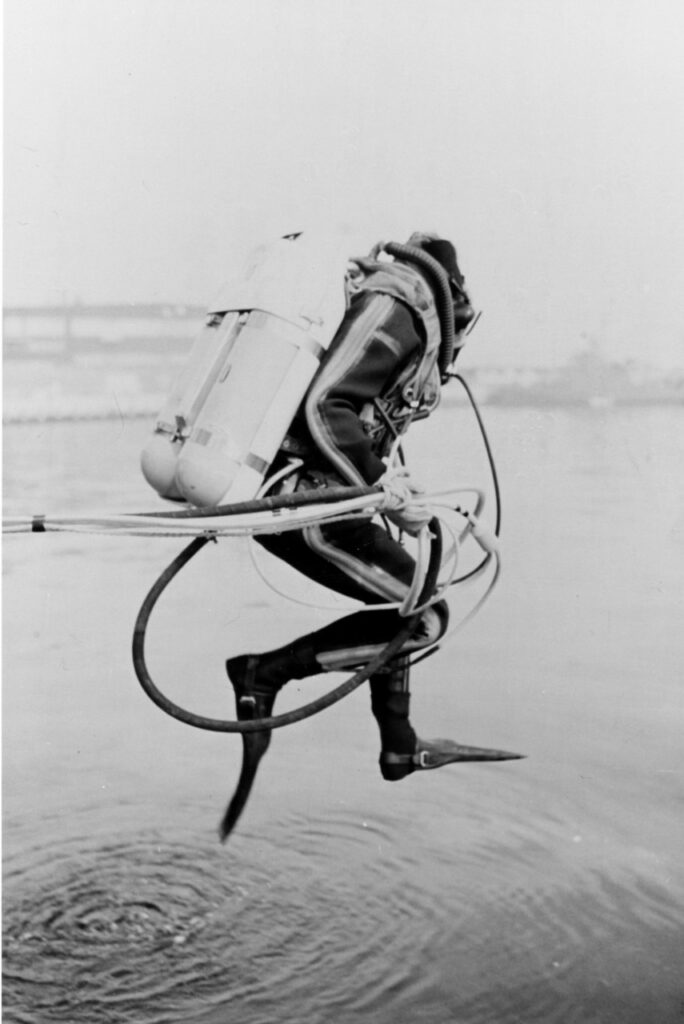

SEALAB II
SEALAB II was designed, built, and outfitted at Hunter’s Point Naval Shipyard in San Francisco. The Navy lowered it to the sea floor off La Jolla, California, in the fall of 1965. It was designed to house ten men at a depth of 200 feet for 30 days. The habitat was 50’ long and 12’ in diameter, and included four separate areas: entry, laboratory, galley, and living spaces. Entry while on the ocean floor was from below the habitat, with divers emerging into the pressurized habitat through an open moon pool.

Whereas SEALAB I tested and proved the concept of saturation diving, SEALAB II provided evidence that useful work could be done. The Navy conducted physiological and psychological studies to determine man’s effectiveness underwater for an extended period. The divers evaluated the structural engineering of the habitat. They worked on a mock-up of a submarine hull and tested undersea tools; they raised an old navy jet fighter to the surface using syntactic foam; they set up a weather station, mined ore samples, experimented with plants, and studied ocean floor geology. They also experimented with a trained porpoise named Tuffy to do courier work between the habitat and the surface.
The Dolphin Tuffy
It had long been known that dolphins could learn complex tasks. Dolphin Tuffy had a special character and had learned to deliver food and messages to the divers of Sealab II. Tuffy was also capable of performing special tasks including rescuing divers or handing them tools. Tuffy was an official animal of the U.S. Navy. Tuffy was also a movie star and starred in feature films and was a favorite photo subject for Sealab II photographers.
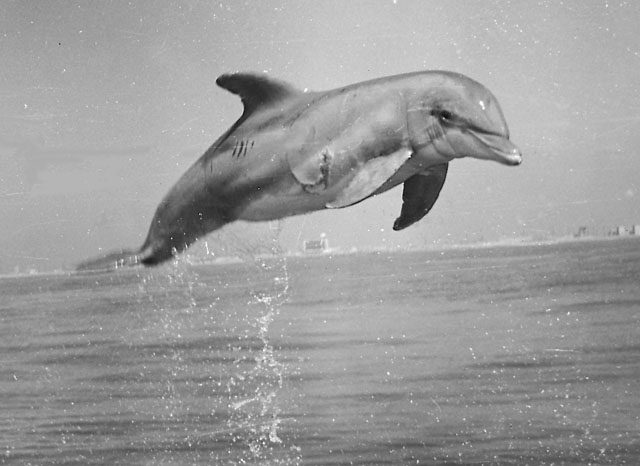
Construction of SEALAB II’s cylinder endbell used technology ahead of its time. The large dish-shaped cap was formed from a sheet of one-inch thick flat steel placed over a die. One hundred pounds of C-4 plastic explosive were distributed on the side of the blank opposite the die. The whole package—die, blank, and charge, weighing 60 tons total—was lowered 30 feet beneath the surface of San Francisco Bay where the explosive was detonated. In approximately .004 seconds the end bell was formed. Explosive metal shaping on this scale had never been attempted before.
Sealab III 1969 @ 610 ft
Sealab III. The follow-on seafloor experiment, Sealab III, was planned for 600 fsw (185 mtrs). This huge undertaking required not only extensive development and testing of equipment but also assessment of human tolerance to high-pressure environments.
To prepare for Sealab III, 28 helium-oxygen saturation dives were performed at the Navy Experimental Diving Unit to depths of 825 fsw between 1965 and 1968. In 1968, a record-breaking excursion dive to 1,025 fsw from a saturation depth of 825 fsw was performed at the Navy Experimental Diving Unit (NEDU). The culmination of this series of dives was a 1,000 fsw, 3-day saturation dive conducted jointly by the U.S. Navy and Duke University in the hyperbaric chambers at Duke. This was the first time man had been saturated at 1,000 fsw. The Sealab III preparation experiments showed that men could readily perform useful work at pressures up to 31 atmospheres and could be returned to normal pressure without harm.

Reaching the depth intended for the Sealab III habitat required highly specialized support, including a diving bell to transfer divers under pressure from the habitat to a pressurized deck decompression chamber. The experiment, however, was marred by tragedy. Shortly after being compressed to 600 fsw in February 1969, Aquanaut Berry Cannon convulsed and drowned. This unfortunate accident ended the Navy’s involvement with seafloor habitats.
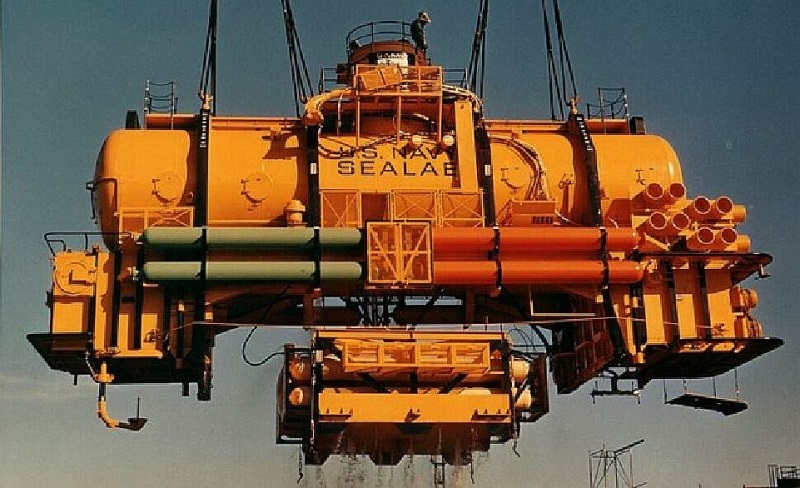
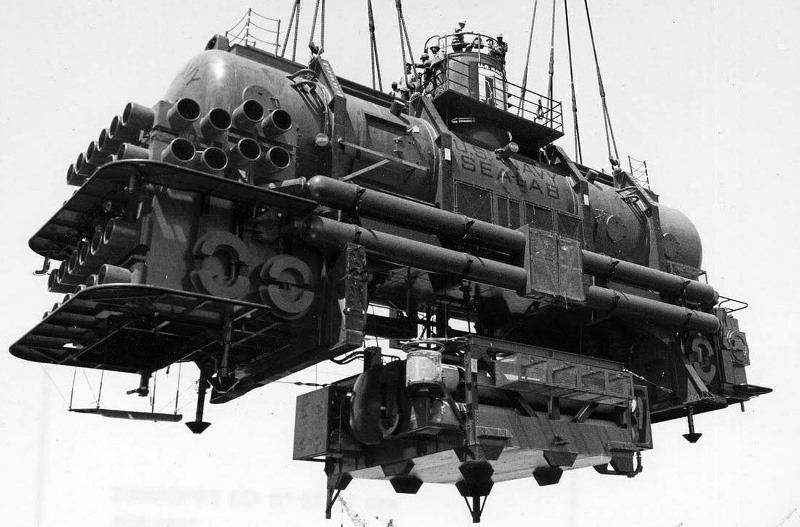

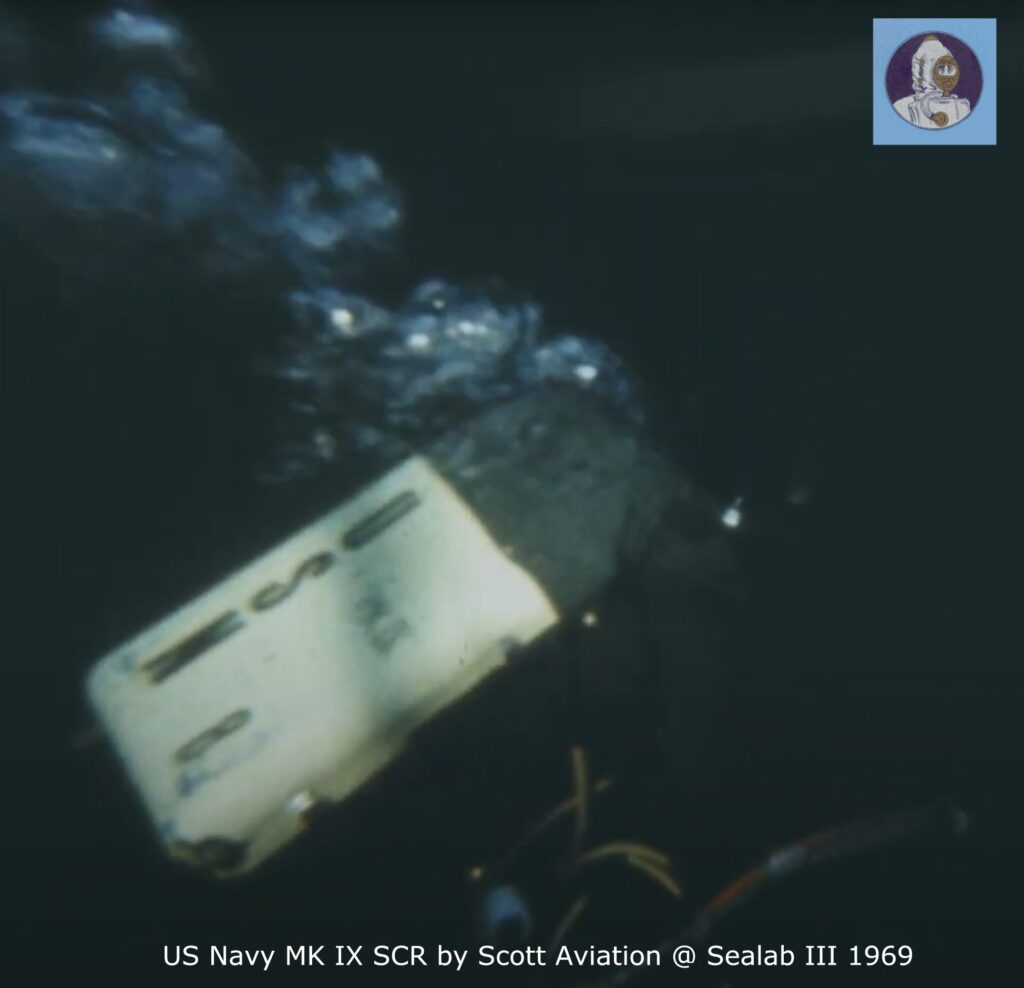

Numerous books and films have been published on the Sealab I,II and III project. Recommended are the following books:

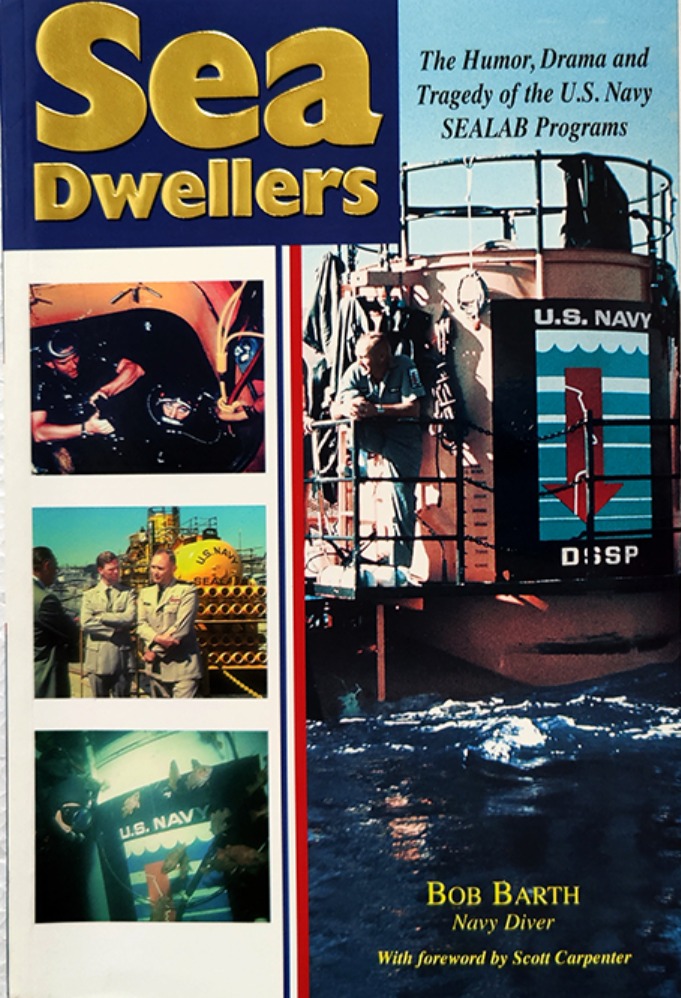

Therebreathersite was founded by Jan Willem Bech in 1999. After a diving career of many years, he decided to start technical diving in 1999. He immediately noticed that at that time there was almost no website that contained the history of closed breathing systems. The start for the website led to a huge collection that offered about 1,300 pages of information until 2019. In 2019, a fresh start was made with the website now freely available online for everyone. Therebreathersite is a source of information for divers, researchers, technicians and students. I hope you enjoy browsing the content!
